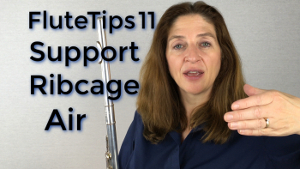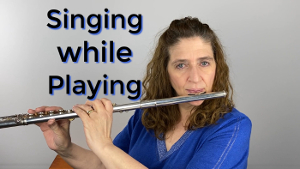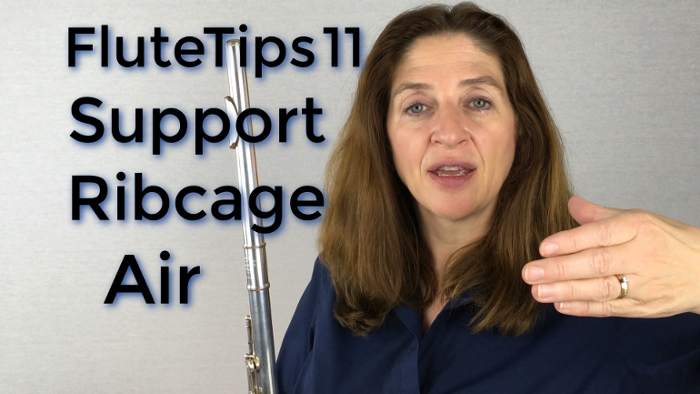We all know that when you breathe for the flute, you need to breathe from your stomach.
But what do you do with your ribcage?
Have you learned to breathe and expand your ribcage at the same time?
Some teachers call that back breathing. You want to breathe from your stomach, and expand your ribcage – front to back.
Front to back, not up and down.
You’re not moving your chest. You’re just moving your ribcage. Expand it. And then what I tell my students is that, you then keep your ribcage expanded all the time unless you need that extra air. If I’m going to play a long passage where I need every ounce of air I’ve got, my ribcage will then come in.
if I’m playing a short passage, my ribcage will stay expanded all the time.
When it stays expanded, you create pressure on that ribcage. You create pressure on your airstream. And that, of course equates to support. And so, then you have a supported sound. And that’s of course what we want to have optimal sound production.
So, think about your ribcage. Are you keeping it expanded when you play? Or does it collapse immediately with your stomach? They both move separately. So, bring your stomach in, keep your ribcage out. Then you can breathe again from your stomach. And it will still keep expanded. Only use your ribcage when you have to because of a very long passage, and you have to use all of your air.
Practice working on using those, both those tanks of air separately so that they don’t both collapse at the same time. I have my students do this without their flute. They just practice breathing having their stomach come in, keeping their ribcage expanded, and then filling it up again right away.
Keep that support. Your tone needs it.
Let me know how this works for you.
Have Fun!
DoctorFlute
Watch me demonstrate this: FluteTips 11 Support – Ribcage Air

FluteTips 101 Singing While Playing for Better Resonance in Your Tone



